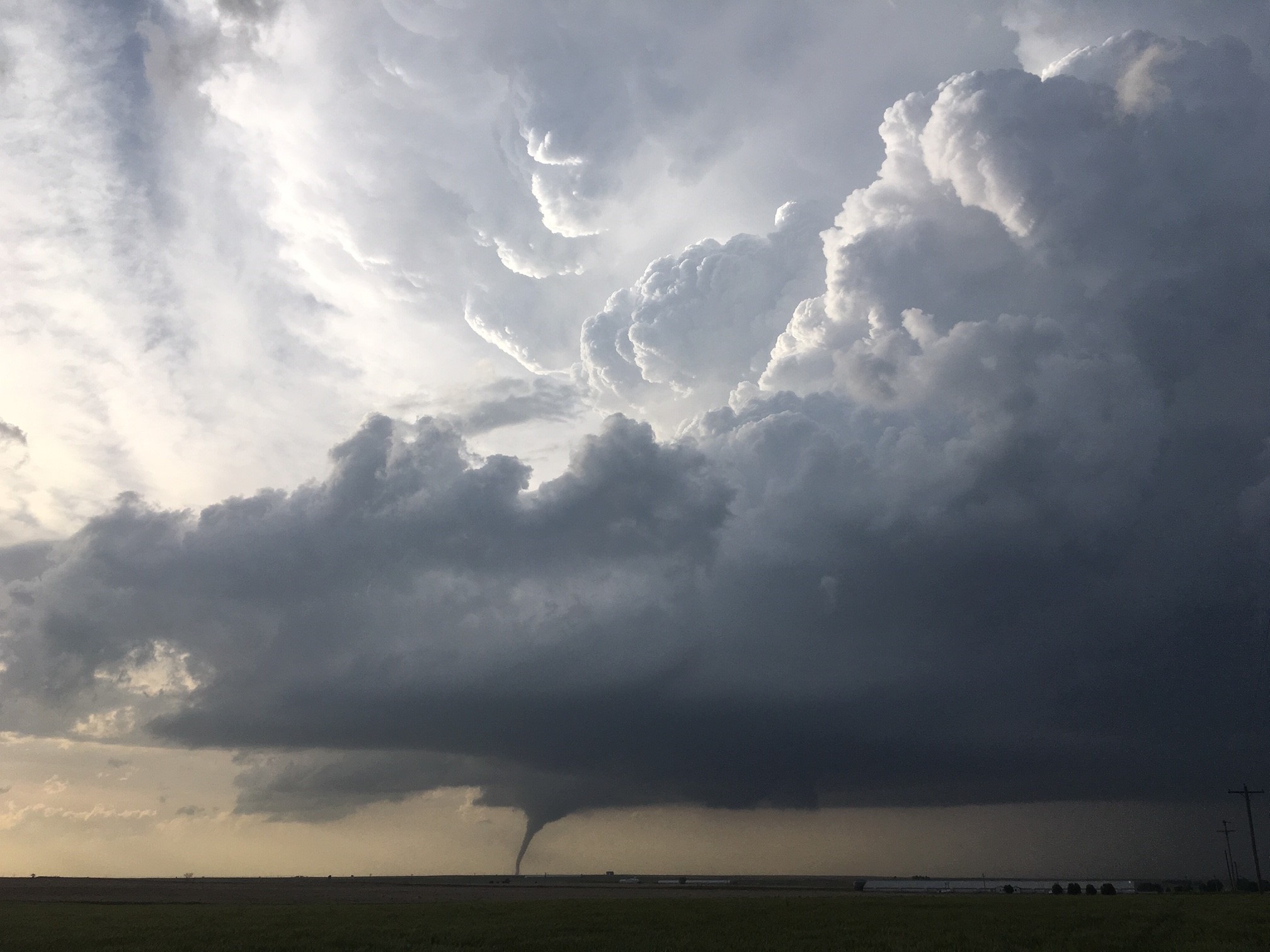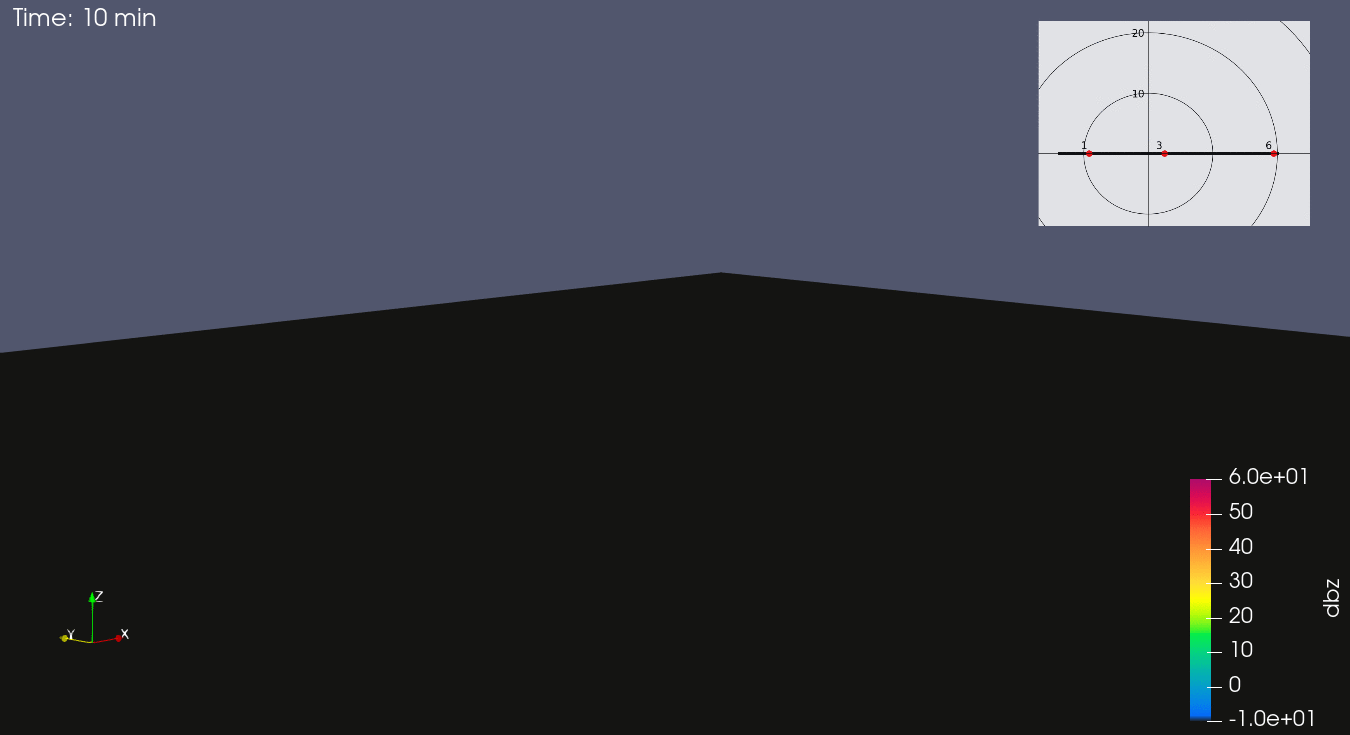
Tornado near Forgan, OK, on 17 May 2019. © J. Dahl.
Welcome!
Johannes Dahl's group is currently focused
on the
dynamics of rotating convective storms and tornadoes.
One of the questions we have concentrated on is where the rotation
that initially spins up the tornado, and then maintains it, originates from.
Moreover, we are concerned with the mechanisms by which the incipient
tornado intensifies. While it is well-established that horizontal
convergence is required to amplify initially weak "seed" ground-level rotation,
the details are more complicated and involve vortex-scale dynamics.
Our primary tool is high-resolution idealized
numerical simulations (see the animation below). For more information
on our research see here.
Recent group news
August 2024: We welcome Nicholas Camp, who will pursue his M.Sc. in our group.
August 2024: Ever wondered how dust devils acquire their spin? Look no further!
April 2024: New paper is out, about tornadogenesis.
January 2024: Welcoming Divya Viswanath, who started her PhD work on tornado dynamics.
September 2023: Welcome to the group, Eda Oz and Kyle Watson!
January 2023: Jannick and Johannes' paper about the interaction of an external boundary with
a supercell is published in MWR
January 2023: Johannes returns from his leave in Berlin, Germany, where he was visiting the Oberleithner group at TU Berlin to study
the stability of tornadoes
May 2022: Jannick defends his PhD thesis. We wish him the best of luck for his future
endeavors!
February 2022: NSF generously agrees to continue supporting our tornado research
For your enjoyment, below is an animation showing a simulated splitting supercell thuderstorm using the Bryan Cloud Model 1 (CM1).

Simulation of a splitting storm using the
Bryan cloud model (CM1). Courtesy of Dr. Jannick Fischer.
Last updated in August 2024

Tornado near Forgan, OK, on 17 May 2019. © J. Dahl.

Simulation of a splitting storm using the Bryan cloud model (CM1). Courtesy of Dr. Jannick Fischer.